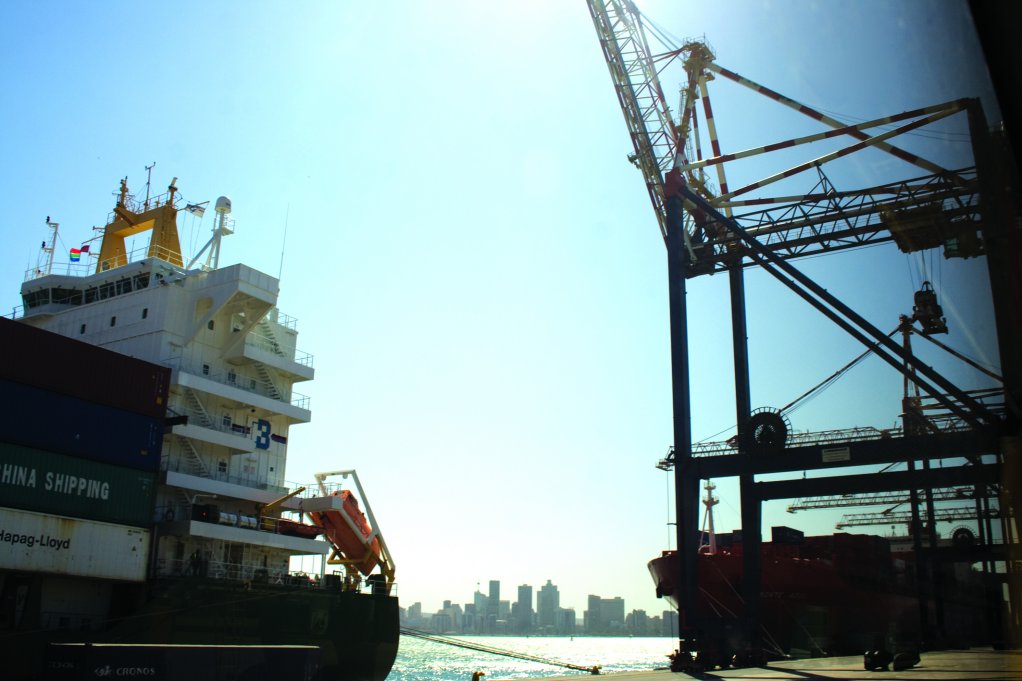
Photo by: Duane Daws
Following Transnet National Ports Authority’s (TNPA’s) ongoing efforts to address shallow spots exacerbated by the size of megaships now calling at the Port of Durban, harbour master Captain Alex Miya has reinstated a number of berths back to their original permissible draughts.
“The vessels calling at our ports have gotten bigger and, therefore, require deeper draughts. But they also cause challenges for ports because of the manner in which they more aggressively displace material from the seabed, causing shallow spots.
“Shallower berths can cut into the vessel payloads of shipowners because it means they cannot sail into the port with their vessels fully laden and have to wait for high tide to sail or berth,” explains Durban port manager Moshe Motlohi.
The permissible draught refers to the vertical distance between the sea bottom and the lowest part of the ship’s underside, otherwise known as the under-keel clearance.
The Durban port allows a 600 mm clearance to minimise the chance of the vessel running aground in that area.
Four of the eight container berths at the Durban container terminal (DCT) have recently been called back to their original permissible draught of 12.2 m, while Berth P at the Point Terminal, Berth MW9 at Maydon Wharf Terminal and bulk Berth BCA 4 in the Island View precinct have also been called back to their permissible draughts of 10.3 m, 9.3 m and 10 m respectively.
“We are also expecting engineering sounding results that are likely to indicate more berths will be called back to their permissible draughts.
“Ultimately, the safety of vessels must take priority for us as TNPA, which is why the harbour master took the safety precaution to review the permissible draughts of some berths earlier this year,” Motlohi notes.
TNPA is, meanwhile, pursuing various interventions to tackle the issue of diminishing draughts and is continuing with maintenance dredging and pushing forward its R2-billion dredging fleet replacement programme.
While the Impisi plough tug continues to dredge in the port, the short-term plan is for the Italeni grab hopper dredger to continue to dredge along the berth pockets of the DCT.
Italeni will remain in Durban until the port takes delivery of a hired dredger dedicated to its dredging needs.
TNPA will also be taking delivery of its new Ilembe suction hopper dredger in December, which will be used for dredging larger areas, such as the entrance channels.
TNPA has also received approval to build a new grab hopper dredger dedicated to the port, which will be delivered by the end of 2016.
“The long-term intervention will be TNPA’s project to deepen and lengthen the berths to cater for the bigger vessels now calling at the port.
“This project is expected to start next year and would enable the port to berth three big vessels rather than the two it is currently accommodating. This will immediately reduce the number of vessels waiting at anchorage, thereby improving port turnaround time,” says the authority.
An additional benefit is that the port will cease to be a tidal port, so that berthing and sailing will no longer depend on high tide. This will optimise the capacity of the port and improve the total vessel stay in South African waters.